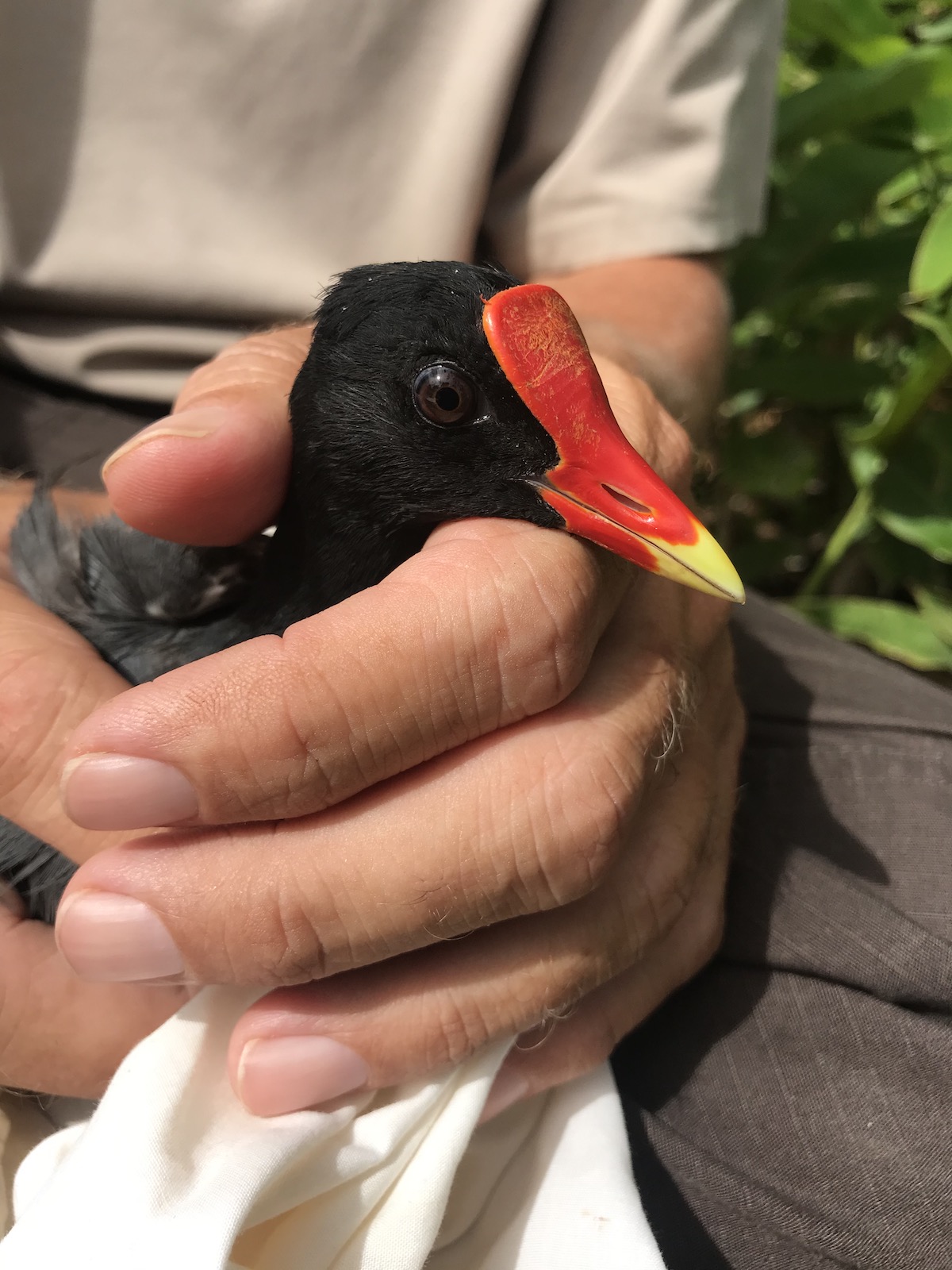Over the next year two years, and with a little help from Pacific Birds, Bryn Webber and the Department of Fisheries and Wildlife at Oregon State University will be going full speed ahead with research on the ‘alae‘ula (Hawaiian Common Gallinule) on Kaua‘i Island, Hawai‘i. As a recipient of one of our 2020 Partnership Grants, Bryn will be purchasing an ATV to help her keep up with the birds that she is tagging with VHF transmitters on Hanalei National Wildlife Refuge, at the Kaua‘i National Wildlife Refuge Complex, managed by the U.S. Fish and Wildlife Service.
The work involves tracking breeding adults and their chicks to determine brood survival across different habitats at the Refuge. The vehicle will allow her to cover much more ground as she follows this cryptic species. Bryn is comparing ‘alae‘ula reproductive success in kalo lo‘i (taro patches) verus managed wetlands, and identifying habitat characteristics associated with nesting success or failure. Managed wetlands are intended to meet the specific life history needs of endangered Hawaiian waterbirds. Taro is a culturally important crop that can also provide breeding habitat for these highly endangered birds, resulting in a win-win for conservation and local food sustainability.
This is the first in-depth study of ‘alae ‘ula breeding in the managed “natural” wetlands on the refuge, as the majority of these managed wetland units were created in the last 10-15 years. Understanding the causes of any nest failures in the kalo lo‘i compared to the managed wetland units will help natural resource managers and farmers provide the best possible conditions for the birds while still getting a good crop. Telemetry work is being complemented with an extensive nest monitoring effort using camera traps to confirm breeding success or to establish the causes of any failures.
"I am thrilled to receive this grant. Covid-19 hindered our ability to commence telemetry work in 2020, so this ATV is crucial to the integrity of the research project as it will allow us to track more birds so that we can make high quality observations of brood survival and habitat use of gallinule across the refuge."
– Bryn Webber, Masters Student / Department of Fisheries and Wildlife, Oregon State University
This project is also contributing to the management of avian botulism, because when the ATV isn’t busy tracking gallinules, it will be used for early detection of botulism outbreaks. This bacterial disease produces a deadly toxin that is fatal to birds, resulting in muscle weakness (some birds even drown as they cannot hold their heads up). Removing dead birds from a wetland quickly can stop the outbreak and allow staff to take other measures such as draining or flooding an affected site, and potentially rehabilitating affected birds.
This work is filling an important knowledge gap in the ecology of endangered Hawaiian waterbirds and we look forward to seeing the results in 2022. We will let you know what comes from it!

